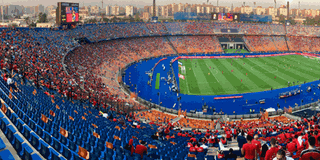Turn Afcon stadia into tourist sites

What you need to know:
- We have seen it in South Africa, after football World Cup 2010. We saw Brazil after World Cup 2014, how it still struggles to manage World Cup stadiums. Russia also struggled after World Cup 2018. So governments don’t have the ability to repair and maintain the facilities, thanks to poor feasibility studies and bad selection criteria by organisers
The 2019 edition of African Cup of Nations (Afcon) is underway in Egypt. Egypt grabbed the hosting opportunity after initial host Cameroon failed to convince the Confederation of African Football (CAF) that it was ready to accommodate 24 African participating nations. Unlike Cameroon, Egypt was ready. But unpreparedness is not new in Africa.
It takes planning discipline to be ready for a tournament the size of Afcon. Countries plan well, coordinate and control resources to enable them be successful. And millions of dollars must be available to spend in order to meet minimum requirements of CAF, FIFA and the like. This is where many potential hosts become desperate, to impress the world. They draw money from all corners of government. So they can build stadiums, hotel facilities roads, swimming arenas, training facilities and gyms. For new hosts, most times, governments borrow money to develop facilities from scratch.
Then at the events, the stadiums are full to the brim. Hoteliers make their money. And gate collections look good. But the duration of these events is not enough to return the investments.
Earnings during the event do not come close to the amount of money invested in preparations. So, what happens when the tournament is over? Continuous use of these facilities is usually hit by low attendance and inability to maintain them. City authorities where there are no major sporting clubs struggle to use the facilities. So host governments continue to scratch their heads over how to sustain their newly built infrastructure.
We have seen it in South Africa, after football World Cup 2010. We saw Brazil after World Cup 2014, how it still struggles to manage World Cup stadiums. Russia also struggled after World Cup 2018. So governments don’t have the ability to repair and maintain the facilities, thanks to poor feasibility studies and bad selection criteria by organisers.
Regional governments that operate on shoe-string budgets cannot cope with the enormous maintenance costs, let alone generating revenue. Only a handful of local clubs can gainfully utilise such facilities. And so infrastructures remain unutilised. Maybe, the authorities can use it for local competitions, just to collect money for maintenance or give the facilities to youth teams. Or subsidise on the cost of these facilities for local clubs. Or try to change use altogether.
Like, for trade expos once in a while or turn the stadiums into sporting expos of sorts. Other uses can be by turning such facilities into museums. Let the facilities be tourist grounds. Add labels of individual sports personalities. South African World Cup 2010 edition is famous for the football match predictor, Octopus ‘Paulo’.
The football administration in South Africa can make a huge effigy of Octopus Paulo in front of the stadium to attract tourists.
Simon J. Mone,
[email protected]




